Check The HIP !
Fully intertwined within the Netherlands Pavilion, surrounded by the best Dutch water sector expertise, the Holland Innovation Park (HIP) is the spot to discover the latest groundbreaking Dutch innovations in the field of water during this year’s Aquatech Amsterdam.
The Netherlands Pavilion is hosted by the Netherlands Water Partnership (NWP), Water Alliance and Partners for Water. The HIP is an initiative of Water Alliance.
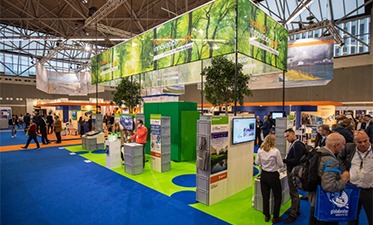
Who to meet in the Holland Innovation Park
Frans Durieux of Purgatoria
ICABUS strainer filters toilet paper from sewage water
“The first project will officially start as soon as we have the green light from the water board”
Frans Durieux, the 52-year-old owner of Purgatoria, has worked in water technology for thirty years. His big dream has always been to bring to market—in his own words—‘a technique of his own’. He did just that by developing a new screening technique to remove toilet paper from sewage.
“In the Netherlands, fine sieves are used to remove paper pulp from sewers, but they have small sieve holes”, says Durieux. “By using a patented small angle, I made it possible to capture small fibers with much larger sieve holes. I started with a pilot model with some 3D printed parts that was tested at a WWTP.” Using larger holes makes the strainer easier to clean and saves energy. With these positive results and the help of financiers, Durieux went on to build the larger version: the ICABUS.
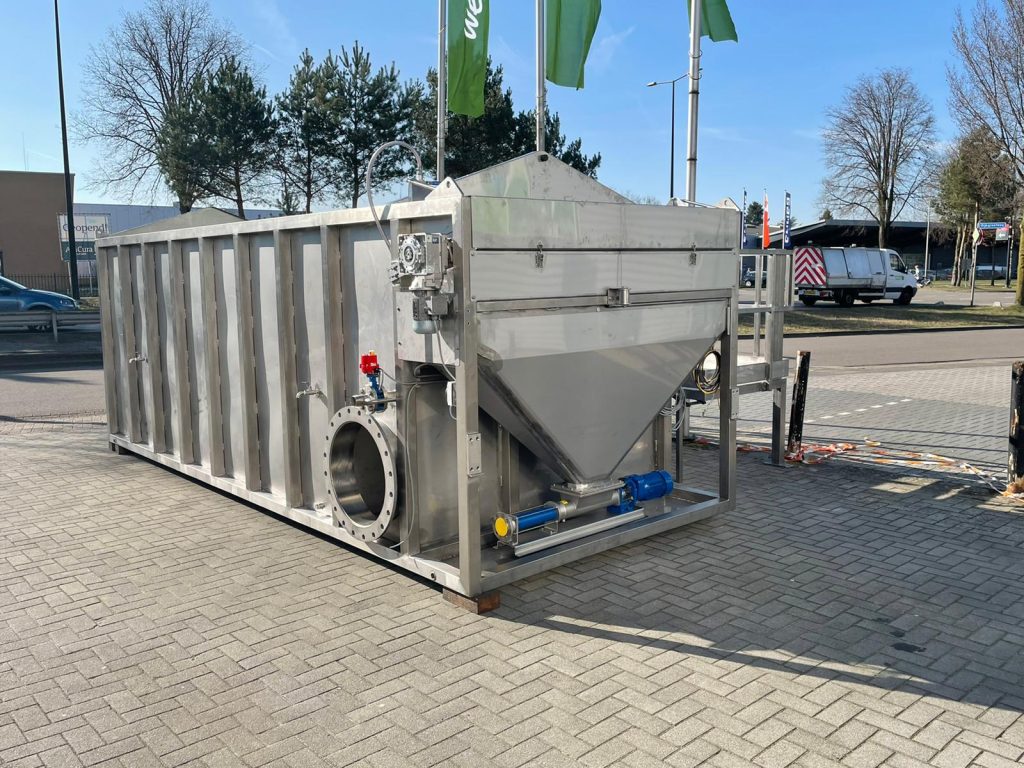
The ICABUS can process up to a thousand cubic metres of water per hour using only 250 watts of energy. It removes about 30% of the dry matter (virtually all toilet paper) and concentrates the pulp to about 10% dry matter. Durieux has developed a strong business case with five water boards and is waiting for the green light to install the first major project for one of them. “If the first project runs and is successful, other water boards will follow”, says Durieux. “A new product has to prove itself, but overall, things are looking good. Our primary focus is on the municipal market, but the ICABUS has also been tested on anaerobic granular and primary sludge, again with good results.”
Lisanne Schuttert & Kristian Bramer of Jotem Water Solutions
The BluElephant wants to give something back to the world
“One elephant makes no difference, but a whole caravan does”
Lisanne Schuttert (business development coordinator) and Kristian Bramer (development & innovation engineer) are involved with Jotem Water Solutions—the company behind the BluElephant—in various ways. This mobile, decentralized wastewater treatment plant is aimed at, in Schuttert’s words, making the world a little more beautiful.
The BluElephant stems from a public-private partnership. From Jotem Water Solutions, Schuttert works on business strategy and brand positioning, while Bramer focuses more on content and technology. “The development took about three years”, Bramer says of the creation. “We are now ready to go to market. We have validated prototypes in multiple locations and are almost ready for series production.” The BluElephant is capable of decentralized wastewater treatment, with a capacity of up to 200 people daily. A circular water supply, in other words. It is highly suited to local communities, residential areas, campgrounds and remote sites.
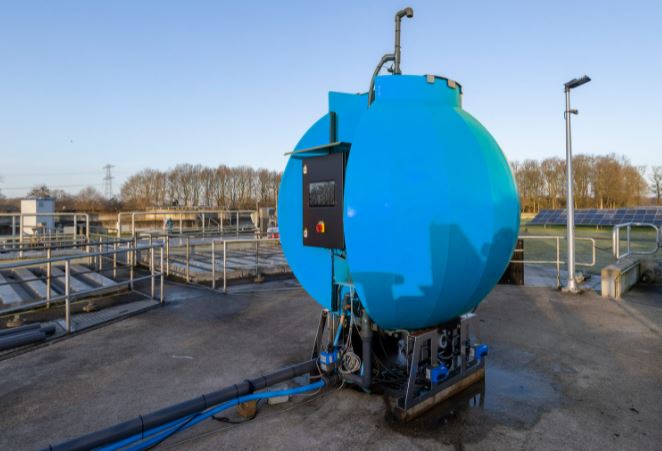
“We have selected some early adopters for the first use of the facilities who are also participating in the development”, Bramer continues. “The Saxion University of Applied Sciences in Enschede uses it, as does a local nursing home in Palestine”, adds Schuttert. “The BluElephant can add value at home and abroad, as long as there are local water sources. We want to create a community where we learn from each other and make a difference together.” The innovation serves multiple purposes, including proper management of local waste streams and improved user hygiene. “However”, Bramer continues, “the BluElephant also reproduces clean water that can be directly reused, such as for irrigation in greenhouses and small-scale agriculture.” “We want to mature the product and market it globally, including a close-knit community. Our goal is to make the world a little more beautiful”, concludes Schuttert.
Judith le Fèvre of Ferr-Tech
WIS Award winner Ferr-Tech aims to further internationalize in the coming years
“We want to unlock multiple parts of the world within now and three years”
Meppel-based Fer-Tech succeeded in producing a stable and sustainable version of the powerful oxidant Ferrate(VI). The company successfully brought the innovation to market by combining talents and joining forces. We spoke with CMO and co-owner Le Fèvre regarding the latest developments.
Ferrate(VI), under the production name FerSol in liquid form, is a green chemical that provides a sustainable and efficient wastewater treatment solution. “The unique thing about FerSol is that we managed to produce a stable and long-lasting version of Ferrate(VI)”, says Le Fèvre. “The result is a green and efficient wastewater treatment solution. The product is also applicable as a detergent in industrial washing processes.”
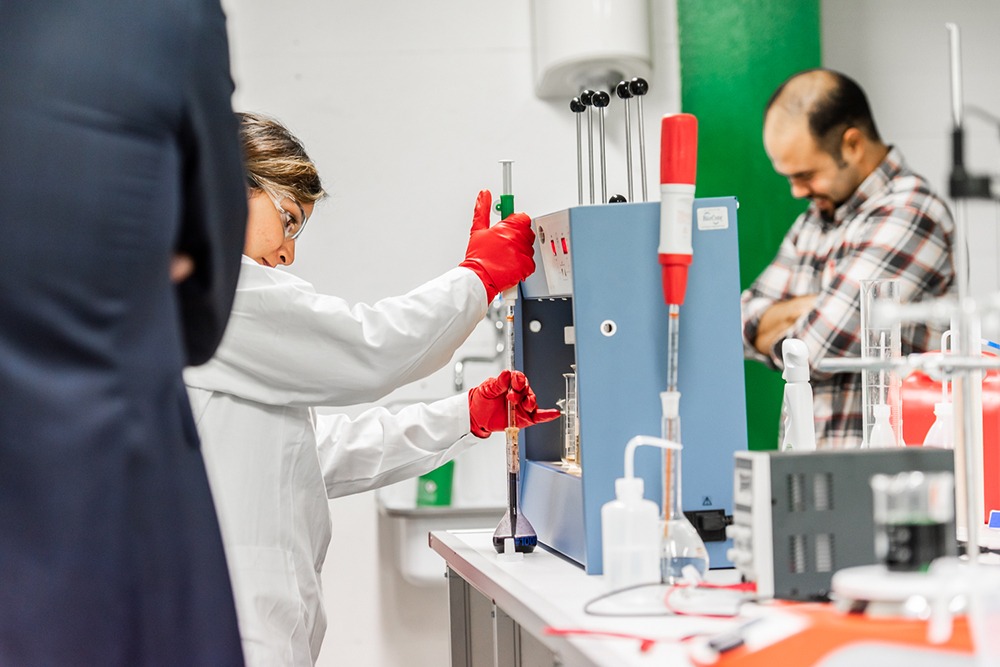
Treating wastewater in a non-toxic and environmentally friendly way sounds almost too good to be true. “This powerful oxidant enables water reuse and reduces energy consumption”, says Le Fèvre. “In addition, no harmful byproducts are left in the surface water. We achieve the same or better results in washing processes while lowering the wash temperature from 85 degrees to ambient temperature.”
With FerSol, Ferr-Tech is on the threshold of doing business with a launching customer in plastic recycling in America. “One of our goals is to further internationalize the company. We have been active in Europe for quite some time; we have now found a party in America—where we have already supplied other customers—and are in the long-run testing phase. We have already achieved three of the four targets. If this becomes a return customer, we will begin local production there. We want to unlock multiple parts of the world, such as the Middle East and Asia, within now and three years”
Hans Keuken of Process Design Center
Hans Keuken combines Artificial Intelligence and water technology
“Our expert system can be seen as a smart colleague who knows a lot and makes recommendations”
Hans Keuken (61) is the founder and CEO of the Breda-based Process Design Center (PDC) and has been in the chemical technology business since the mid-1980s. Artificial Intelligence (AI) has always played a prominent role in his career. With PDC, he designed Prosyn.ai, an expert system that can explore a wide range of potential technological water management solutions.
“You can think of our innovation like a doctor’s visit”, Keuken begins. “You are sick, so the doctor asks many questions and eventually arrives at a diagnosis. We have developed AI software with an algorithm for the industrial sector; on the one hand, it helps companies maximize recycling and the reuse of process water, but it can also support the selection of the most appropriate membrane technology.” The benefits of Prosyn.ai include recovering valuable power components, optimizing water treatment efficiency and reducing freshwater consumption.
Keuken uses several metaphors to explain Prosyn.ai, including a chess computer helping an engineer or a very smart colleague who has a lot of knowledge and also offers useful recommendations. “We are almost ready to start playing a significant role in water conservation within the industry, but there is still progress to be made at the circular level. We will work on that with Wetsus in Leeuwarden. We aim to build a facilitating organization at WaterCampus in Leeuwarden with the right network of people so it can become a knowledge carrier within the leading institute.”
Ewout Riteco of SOLiSENZ
SOLiSENZ must become inseparable from sludge dewatering
“No one in the world has this”
Ewout Riteco, co-owner of the Texel-based trade organization Qsenz, speaks with conviction. Together with Wilco Keijzer, he developed the SOLiSENZ, a product that can reliably measure dry matter in the sludge line. Riteco discusses the ingenious sensor, which is receiving foreign interest. Riteco wants SOLiSENZ to become a household name.
After an intensive validation and testing period, SOLiSENZ is now on the market and in use by several water boards. “The primary request came from Royal HaskoningDHV and GMB because there was a need for more accurate TSS measurements in centrate streams from sludge dewatering”, says Riteco. TSS is also known as dry matter. SOLiSENZ can reliably measure dry matter in centrate, something no other party can currently do.
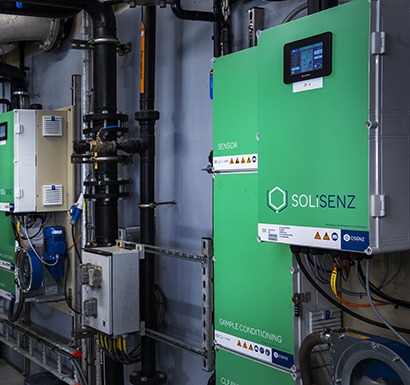
Many water board treatment plants find that the centrate dry matter sensors in the centrifuge are a bottleneck in the sludge line. The sensors become fouled, partly due to the use of polymers and the release of gas bubbles created when sludge is centrifuged. “With the SOLiSENZ, that becomes a thing of the past”, Riteco continues. “The gas bubbles are removed, and the system stays clean. This only has benefits, such as reduced polymer and chemical use, drier sludge cake, reduced energy consumption and reduced CO2 emissions. No one else has this.” The SOLiSENZ is ready to make an impact, nationally and internationally.
Robbert Lodewijks of HULO
Tackling water scarcity with HULO
Four billion Olympic swimming pools’ worth of water savings
Water scarcity is one of the greatest threats to all living organisms on Earth. In places where drinking water is scarce, getting that water to the people who need it most is essential. In some countries, up to fifty per cent of drinking water produced is lost in the journey through the pipeline to the customer. Something has to be done about it, and that is exactly what HULO does.
“It started as a way to extend the Friday afternoon happy hour”, says co-founder Robbert Lodewijks. “Together with Frank van der Hulst of Acquaint—the company where I started working—we came up with the craziest ideas about ventures and moving various plans forward. When Acquaint participated in a Wetsus study on water loss from leaks in pipes, something suddenly came along that we believed in strongly.” After further research, HULO developed a product that can greatly benefit drinking water companies worldwide. A key part of the solution is sensors.
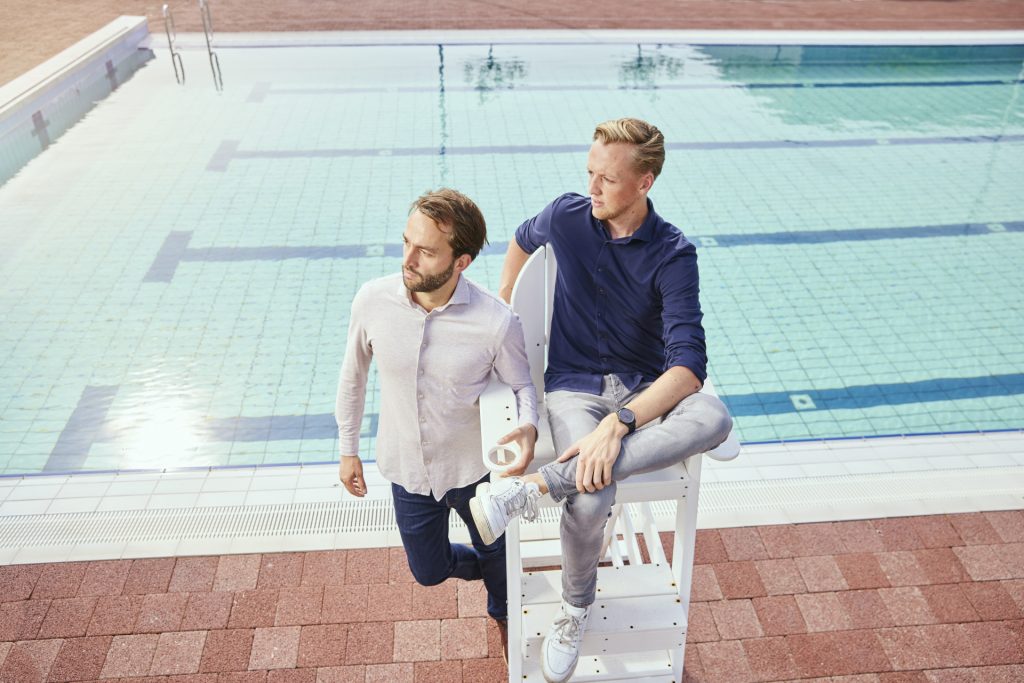
“Simply put, there are several sensors in a drinking water distribution network”, says Lodewijks. “Those sensors have certain historical data, which is used to predict what new data a particular sensor will need to output in the future. However, that still does not reflect the whole picture. We build software that uses data from sensors A, B and C to predict what sensor D should display. Instead of making predictions, you’re seeing what’s happening in real-time. With our method, leaks can be detected more quickly, and false positives are increasingly ruled out as the system looks at how the sensors work together, not how they should respond.
This technology has already been proven in the Netherlands and is making its first steps internationally in countries such as England, Spain, Oman and Ethiopia. By developing a scalable product, we can deploy it anywhere in the world and make a global impact by saving water, which is ultimately our main goal!”
Jeanette Ververs of Hulo
Bringing data from multiple sources into a single comprehensive hydraulic model
They joined the HIP when the presses for WaterProofs Aquatech Special were already running, but we are extremely happy that we can still take them with us: Spatial Eye with NetCon. Jeanette Ververs, Product Manager at Spatial Eye for the GIS Solutions, explains. ‘Spatial Eye is the developer of GIS-based data ingestion software for utility and telecom company networks’, says Ververs. ‘Our innovation is NetCon, our latest extension that extends the ingestion of utility asset data to network connectivity in near real-time. This addresses the need for accurate and up-to-date input information for network calculation scenarios. The integration capabilities of Jeanette Ververs of Spatial Eye the solution merges data from multiple sources into a single comprehensive hydraulic model. This innovation seamlessly blends into our software portfolio, which provides attractive spatial and non-spatial visualization, query, analysis, and reporting capabilities, as well as comprehensive data ingestion tools.’ Plans for the future? Ververs explains: ‘In five years from now Spatial Eye aims to support several water companies worldwide in making the water transition a reality by enabling the creation of digital (twin) water network models, supporting complex network decision processes, and improving the planning of resources, assets, and expansions

